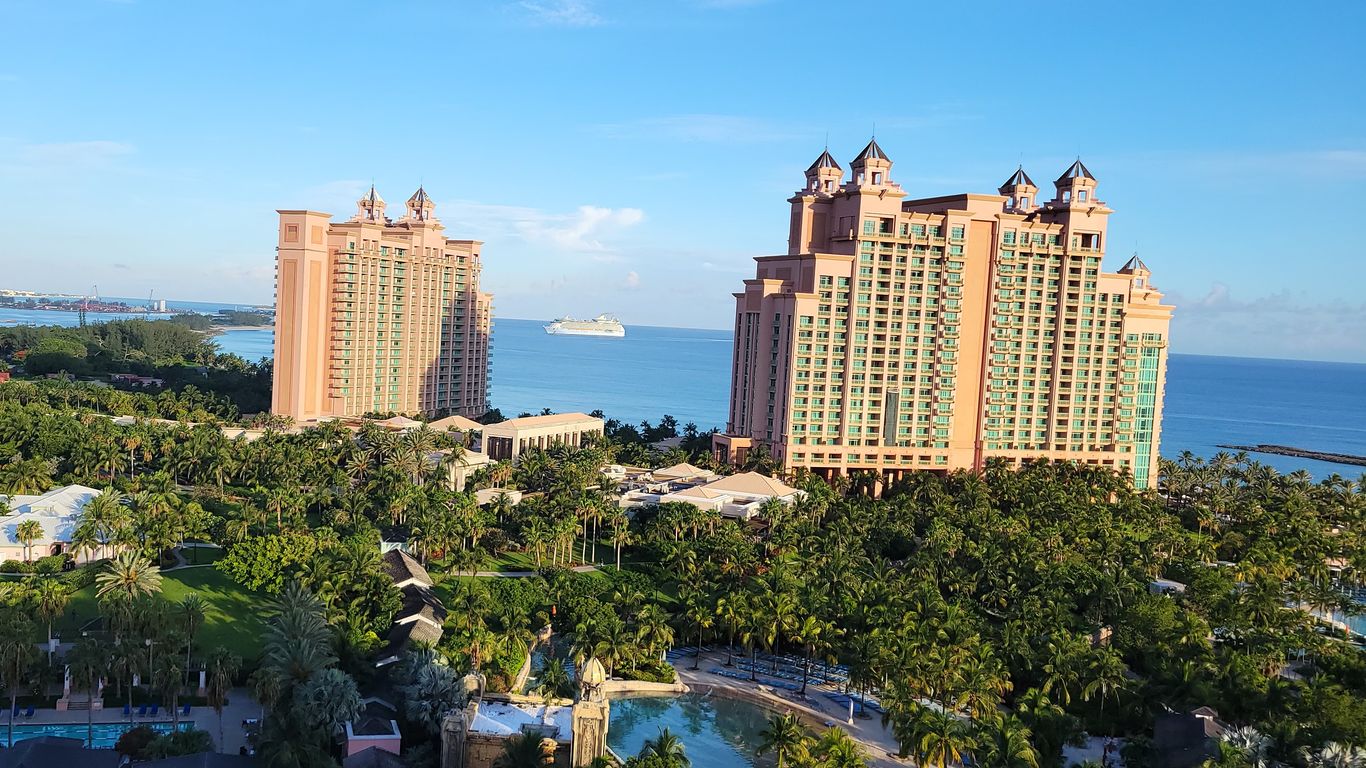
JOY JIBRILU DISCUSSES SURGING BAHAMAS ARRIVALS, HURRICANE SEASON AND MORE
Bahamas officials are betting government-backed tourism infrastructure improvements combined with the debut of new Nassau resorts will extend an unprecedented visitor arrival surge.
Last year, the archipelagic nation hosted an all-time record 9,654,838 visitors, a 38 percent increase over 2022 and 33 percent over the previous record, set in 2019 according to the Bahamas Ministry of Tourism, Investments & Aviation.
The Bahamas’ record 2023 arrivals included a 17 percent increase in international air arrivals with 1,719,980 visitors.
Meanwhile cruise ship visitors, by far the nation’s primary visitor source, climbed by nearly 50 percent to 7,934,858 visitors, up from the 5,530,462 cruise travelers who visited in 2022.
Visitor growth has continued this year, albeit at a slightly slower pace. Bahamas air arrivals totaled 662,815 visitors between January and April, up 3.5 percent 2023. Cruise visitors for the period totaled 3,210,541, up 14.5 percent from the 2,769,206 hosted in 2023.
Long the most-visited Caribbean-region cruise port, Nassau’s 2023 arrivals were boosted by the 2023 opening of the $300 million Nassau Cruise Port. Bahamas travelers will also find new properties including the Nassau’s Goldwyn Resorts and Residences and the revamped classic British Colonial Nassau hotel.
Of course, the destination’s land-based visitation is driven in large part by the Nassau-based mega-resorts Atlantis Paradise Island and Baha Mar, while the Paradise Island district also includes the Sandals Royal Bahamian property.
Joy Jibrilu, who in 2022 became the first woman and first Bahamian named CEO of the Nassau Paradise Island Promotion Board (NPIPB), is working to continue Nassau’s tourism growth, and by extension that of the Bahamas.
We spoke with Jibrilu during last week’s Internation Travel Partners Conference in Nassau to learn about her efforts to extend the destination’s tourism success.
TP: How is the Bahamas preparing for the upcoming hurricane season?
JJ: It's the public service announcements, it's the constant reminders to be prepared. Do you have A, B and C? Our preparation has changed. Grand Bahama taught us something with flooding. Climate change is a real thing for us; we're seeing flooding in the streets of Nassau. During my whole childhood [in the Bahamas], this was not a thing, but the level sea level is rising. So, every hurricane teaches new lessons. On the island of Grand Bahama we’re building a hurricane shelter. It’s a public-private sector [project] because government can’t do it all.
TP: How have public-private partnerships enabled NPIPB to enhance Nassau’s tourism attractions and infrastructure?
JJ: Having worked on [the government] side and seen the budgets, definitely they can’t do it all. We’ve [completed] public-private initiatives like the restoration of the Queen’s Staircase. If we [work] together we can do it. And that will be the impetus to do more.
TP: Cruise arrivals continue to dominate Bahamas tourism. How do these travelers rank in terms of profitability versus land-based vacationers?
JJ: The numbers coming in via cruise [ships] into Nassau itself are absolutely staggering. Last year 4.8 million passengers came in; this year it’s going to exceed five million. That’s a lot of people to come in. We now see 90 percent of all visitors coming into the Bahamas coming in via cruise.
That 90 percent is leaving approximately 10 percent in terms of visitor spend[ing]. It’s that 10 percent that contributing 90 percent in terms of growth. So for us, the focus and attention has to be on the [overnight, land-based] visitor. The average cruise passenger spends approximately $80; it’s relatively minimal. The average [land] visitor spends $2,000.
TP: What does that imbalance mean for the Bahamas?
JJ: It’s not to discount the cruise passengers, but we cannot support everything that the government of the Bahamas needs to do [including] the tourism infrastructure on those five million cruise visitors. [Nevertheless] the transformation and renovation of Nassau Cruise Port, a $300 million upgrade, obviously is [enabling] more cruise passengers to come in. And their experience is fortunately a seamless one.
TP: Has the Nassau Cruise Port’s opening impacted the downtown district?
JJ: What was hoped initially was the transformation of Nassau Cruise Port would cause the immediate revitalization and renaissance of the downtown area. Bay Street [Nassau’s primary downtown shopping street] needs a lot of loving. We’ve not seen that happen to the speed we want to, but the research and surveys are showing us people do want to leave the cruise port. They are looking for things to do.
TP: How has your agency worked to influence changes on Bay Street?
JJ: The deputy prime minister [Chester Cooper] and his team [are] saying we have to do what we can to push this to happen. So all the old derelict buildings, abandoned buildings that are privately owned, we are going to tear down.
That alone allows for re-planting of foliage. We are [installing] murals along the street to create an atmosphere that attracts people. So there’s a lot of interest now and I think people are seeing the potential.
TP: How is this impacting local tourism efforts?
People are beginning to see the power of this ready-made market. The numbers that are coming through there and the opportunity that it presents makes people think ‘Oh, what if I opened a tea shop there?’ [Visitors] are begging for things to do.
2024-07-01T14:55:43Z dg43tfdfdgfd